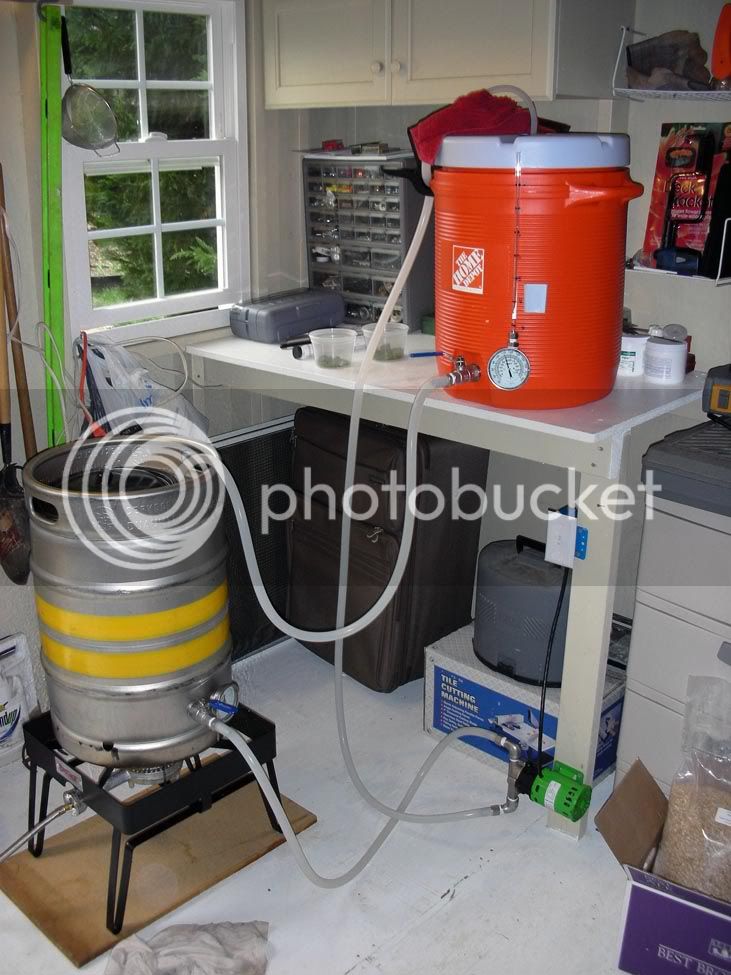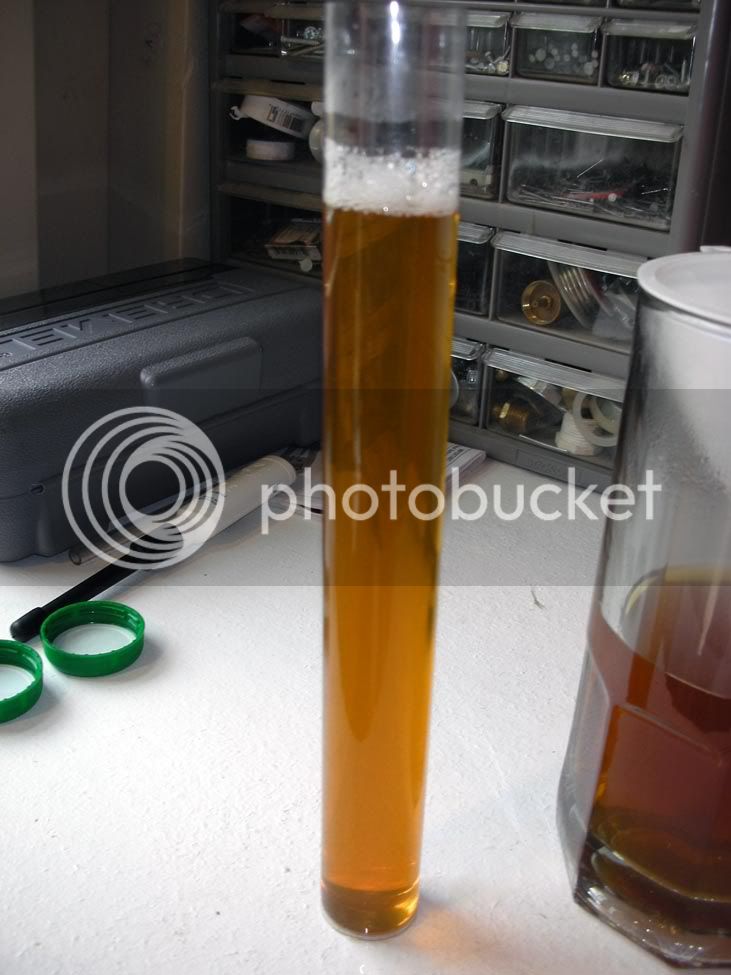Nice system! So, can this be done safely with a single vessel- a stainless MLT with a false bottom? I have a 15 gallon stainless MLT, and this thread made me think- why not heat the water on the stove top, add grain, then keep the burner running on low? I could hook up the March pump to the MLT outlet and just continually recirc to the top of the tun (although I don't have a sparge arm, it would just be a tube running in there)? Wouldn't this prevent scorching and at the same time give better conversion?
My questions are:
1) is using a march pump on a no sparge large volume mash going to cause it to compact on the false bottom, thus making this not work?
2) is recirculating enough to get decent conversion efficiency (especially with no sparge arm to distribute the heated water evenly) as compared with just stirring?
Sounds like a great way to brew!
Klaus
I don't know about pumping out of the MLT, whatever vessel that happens to be. My MLT is gravity feed to BK, and I have experienced stuck mashes, depending on grain bill. It might work with a false bottom, but I would think that you would have to pump mighty slow.
A 60-min recirculating mash has always resulted in complete conversion for me. I've tested with iodine a couple of times, now I just take it for granted. I think the efficiency issues arise from not rinsing and equipment more than conversion issues.




































![Craft A Brew - Safale BE-256 Yeast - Fermentis - Belgian Ale Dry Yeast - For Belgian & Strong Ales - Ingredients for Home Brewing - Beer Making Supplies - [3 Pack]](https://m.media-amazon.com/images/I/51bcKEwQmWL._SL500_.jpg)




